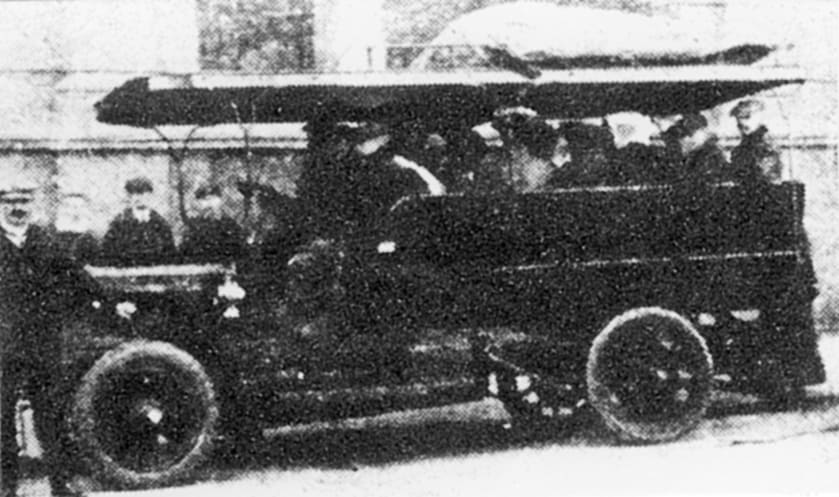The firm of Finlayson Brothers & Co., of the Devon Ironworks at Devonport West, Tasmania, was a company of ironfounders, machinery merchants and engineers who, from 1906, built a range of buses and service coaches that went into use on routes around Tasmania. The Finlayson firm was also involved in providing engineering services to the marine community. The company, as founded by George Finlayson Senior, was then directed by members of the Finlayson family, David, George Junior and James.
Finlayson built its first motor vehicle, a steam car, in 1900. The engine was a 2 cylinder, giving 6hp, and was supplied with steam at 200psi from a semi-flash kerosene burning boiler mounted beneath the seat. Drive was by chain to the rear axle of the 600lb (272kg) vehicle. Originally, it was fitted with solid rubber tyres and the body provided seating for four persons, with two of the passengers being placed at the front, using a fold-down foot-board.
The controls comprised a hand throttle to regulate the steam supply, and two foot pedals. One pedal activated the reversing link on the engine, while the other operated the green-hide band brakes on the rear wheels. The fuel tank had a 4½ gallon capacity, and the water, which was contained in a 22 gallon tank, was consumed at the rate of 1 gallon per mile.

It was used as the works vehicle for several years, until being dismantled and stored in the pattern loft, from where it was rescued and restored by Bill Buchanan, in the early 1960’s. In 1964, the car had the honour of leading the procession at the official opening of the new Hobart Bridge.
The Finlayson passenger service vehicles of 1906 were stated to be powered by French Gnome engines, and they employed Paice gearboxes. The size of Gnome engines available at this time were 4 cylinder, of 4 litre capacity, at 24/30hp, and 6 cylinder of 6 litre capacity; the 4 litre may have been the likely size to have been selected by Finlaysons. The bodywork fitted to these vehicles was provided by F. Paine & Son of Launceston.

Three 8-seaters were provided to the Holyman shipping line to provide feeder services around Launceston; this was the firm that later began operating an airline named Australian National Airways.
Two similar vehicles were supplied to Thompsons of St. Helens, for use on their east coast routes. Two 12-seaters were constructed; one for use in the north-western Devonport, Latrobe and the Ulverstone area, to convey tourists to the various beauty spots, while another was employed on the Hobart to Huon run. One small private car, with an 8hp horizontally opposed twin cylinder engine, was also produced. Therefore, a total of nine motor vehicles were built at Finlayson’s works between 1900 and 1908.

The story of the Finlayson Foundry at Devonport drew to a close in 1991, when a major closing down auction was conducted at the Finlayson’s Way site, after 102 years of engineering service to the Tasmanian community. *Max Gregory





